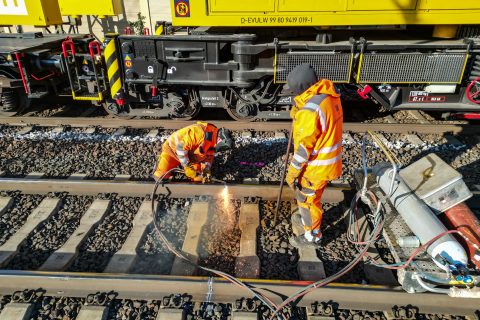UK partnership streamlines East Region engineering

Network Rail has been negotiating with engineering firms around the UK. The UK infrastructure agency has signed a wide-ranging, long-term partnership to streamline infrastructure improvement work. The agreements are in place for the next five years.
There’s a new initiative in the Anglia region of Network Rail. The Eastern Routes Partnership has signed up a rolodex of household engineering names. The partners will work with the UK infrastructure agency for the duration of “Control Period Seven” (CP7). The region has a delivery programme worth 3.5 billion pounds (4.1 billion euros).
Doing more for less
Network Rail has identified a major cost base that makes tendering for work expensive for all parties. The agency has already been charged with a policy of ‘doing more for less’—in short, making operations cheaper. So, they have come up with a plan—or rather an agreement—with suppliers in the East of England.
They’re calling it the Eastern Routes Partnership. The ERP will allow the Eastern Region of Network Rail to award key infrastructure improvement works directly to supply chain partners. The agreement lasts throughout the five years of the railway’s new financial control period, CP7. Network Rail say it will champion collaboration and efficiency.
Deliver a sustained improvement
Getting to this stage has not been easy. “This is the culmination of two years of hard work to bring real innovation to our commercial delivery in CP7”, said Jake Kelly, Managing Director for Eastern Region at Network Rail. “The ERP framework is key to effectively maintaining our infrastructure to deliver a sustained improvement in train performance over the next five years.”

Kelly says the agreement is designed to strengthen Network Rail’s relationships with their supply chain partners. “ERP lets utilise their skills and experience. ERP also lets us take a more collaborative approach by bringing our engineers, delivery teams and suppliers together earlier to identify the minimum viable product.”
Removes individual procurement events
ERP will be in place for all five years of CP7, with the option to extend for up to five years from 2029 (CP8). “Building this stability between the region and its partners means the supply chain will already be on board when the work bank for CP8 is developed”, Network Rail explained in a statement. “The framework also removes the need for individual procurement events.”

The infrastructure agency says this will save valuable time and make the region’s work better value for money. “It will allow for earlier collaboration between the region and its partners in each project,” the agency adds in its statement. Fifteen suppliers are included in ERP, and each will be integrated into the delivery of approximately 3.5 billion pounds (4.1 billion euros) of investment in CP7.
Partners with a particular specialism
Network Rail has divided the roster into two fields. There are “generalist suppliers,” which form the core partnership team. They have been selected across discipline-specific lots to deliver larger, more complex projects and what NR calls “emerging single discipline enhancements.”
Specialist suppliers have been awarded a workbank. This, explained Network Rail is where, due to the scale or scope of the requirement, there is a need for a smaller delivery partner with a particular specialism. It is not made clear if the agreement is exclusive. However, sub-contracting is normal for the delivery of projects in rail and in other industrial sectors.





